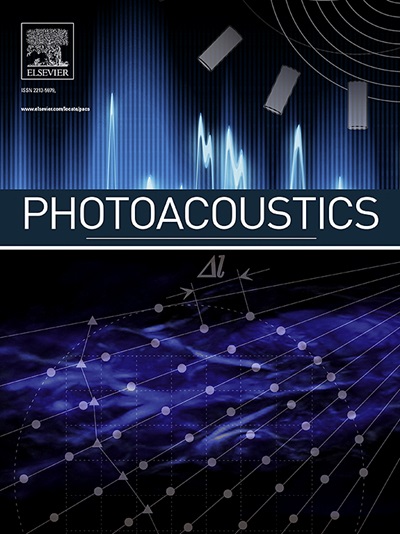基于注意力机制驱动的条件生成对抗网络的环形阵光声层析成像技术的图像复原
IF 7.1
1区 医学
Q1 ENGINEERING, BIOMEDICAL
引用次数: 0
摘要
环阵光声断层成像(PAT)系统在非侵入性生物医学成像中显示出巨大的前景。然而,由于不理想的成像条件,这些系统产生的图像通常会出现质量下降,常见的问题包括模糊和条纹伪影。为了解决这些挑战,我们提出了一种基于条件生成对抗网络(CGAN)框架的图像恢复方法。我们的方法在残余移位窗口变压器模块(RSTM)中集成了混合空间和信道注意机制,以提高发电机的性能。此外,我们开发了一个全面的损失函数来平衡像素级精度,细节保存和感知质量。我们进一步加入了一个伽马校正模块来增强网络输出的对比度。模拟和体内数据的实验结果表明,我们的方法显著提高了分辨率并恢复了整体图像质量。本文章由计算机程序翻译,如有差异,请以英文原文为准。
Image restoration for ring-array photoacoustic tomography based on an attention mechanism driven conditional generative adversarial network
Ring-Array photoacoustic tomography (PAT) systems have shown great promise in non-invasive biomedical imaging. However, images produced by these systems often suffer from quality degradation due to non-ideal imaging conditions, with common issues including blurring and streak artifacts. To address these challenges, we propose an image restoration method based on a conditional generative adversarial network (CGAN) framework. Our approach integrates a hybrid spatial and channel attention mechanism within a Residual Shifted Window Transformer Module (RSTM) to enhance the generator’s performance. Additionally, we have developed a comprehensive loss function to balance pixel-level accuracy, detail preservation, and perceptual quality. We further incorporate a gamma correction module to enhance the contrast of the network’s output. Experimental results on both simulated and in vivo data demonstrate that our method significantly improves resolution and restores overall image quality.
求助全文
通过发布文献求助,成功后即可免费获取论文全文。
去求助
来源期刊

Photoacoustics
Physics and Astronomy-Atomic and Molecular Physics, and Optics
CiteScore
11.40
自引率
16.50%
发文量
96
审稿时长
53 days
期刊介绍:
The open access Photoacoustics journal (PACS) aims to publish original research and review contributions in the field of photoacoustics-optoacoustics-thermoacoustics. This field utilizes acoustical and ultrasonic phenomena excited by electromagnetic radiation for the detection, visualization, and characterization of various materials and biological tissues, including living organisms.
Recent advancements in laser technologies, ultrasound detection approaches, inverse theory, and fast reconstruction algorithms have greatly supported the rapid progress in this field. The unique contrast provided by molecular absorption in photoacoustic-optoacoustic-thermoacoustic methods has allowed for addressing unmet biological and medical needs such as pre-clinical research, clinical imaging of vasculature, tissue and disease physiology, drug efficacy, surgery guidance, and therapy monitoring.
Applications of this field encompass a wide range of medical imaging and sensing applications, including cancer, vascular diseases, brain neurophysiology, ophthalmology, and diabetes. Moreover, photoacoustics-optoacoustics-thermoacoustics is a multidisciplinary field, with contributions from chemistry and nanotechnology, where novel materials such as biodegradable nanoparticles, organic dyes, targeted agents, theranostic probes, and genetically expressed markers are being actively developed.
These advanced materials have significantly improved the signal-to-noise ratio and tissue contrast in photoacoustic methods.
 求助内容:
求助内容: 应助结果提醒方式:
应助结果提醒方式:


